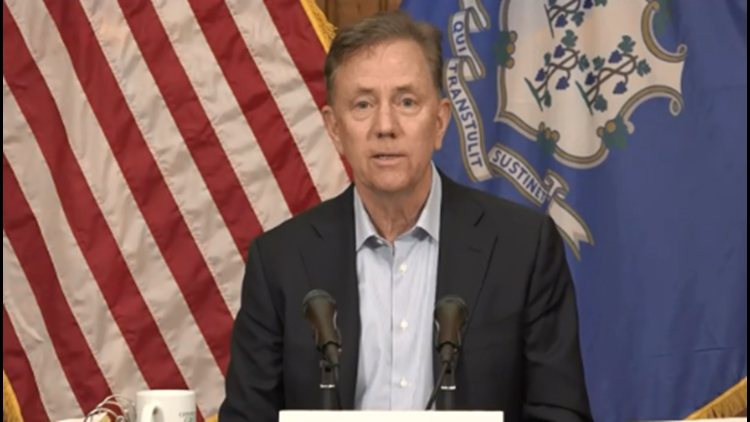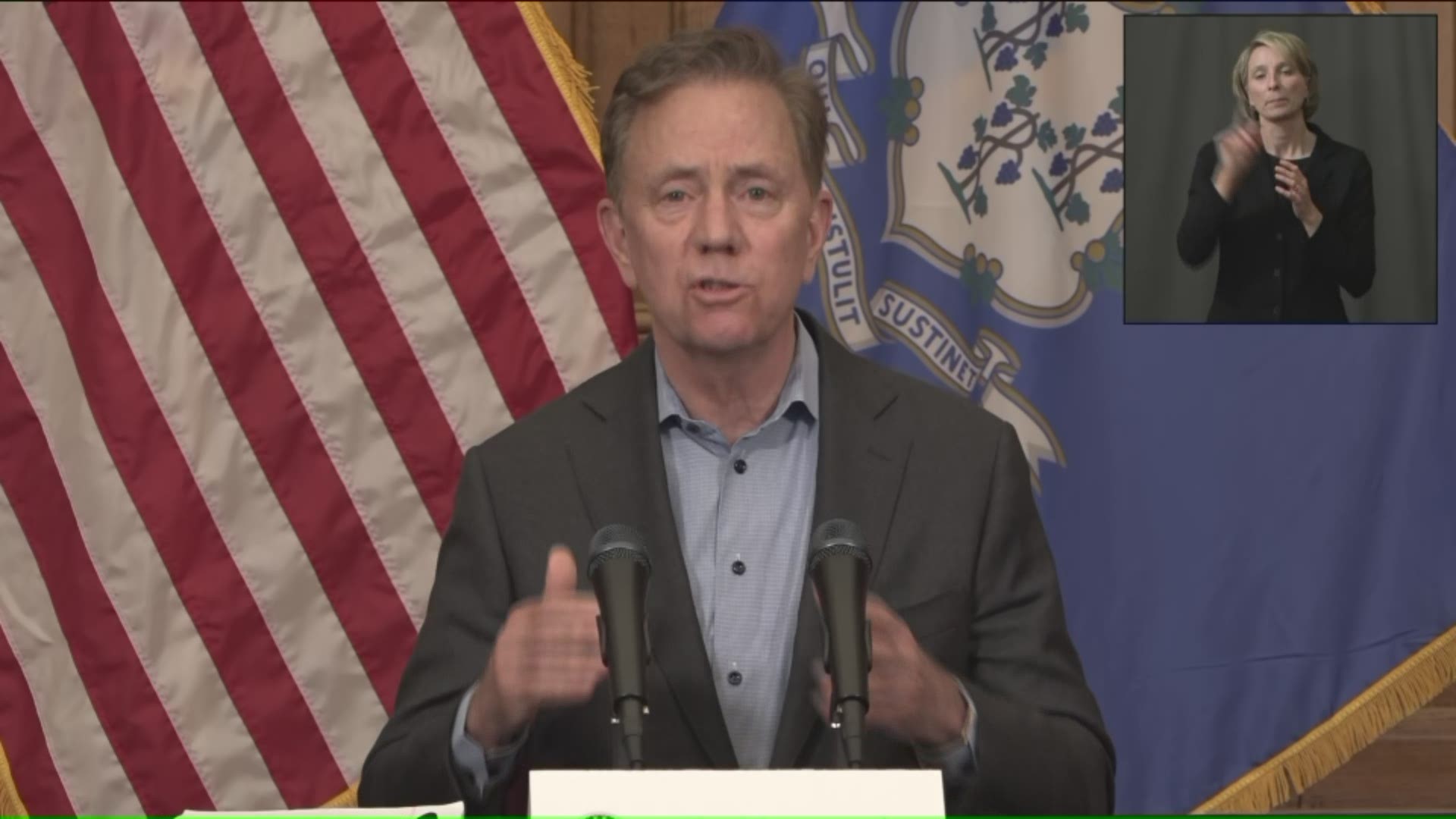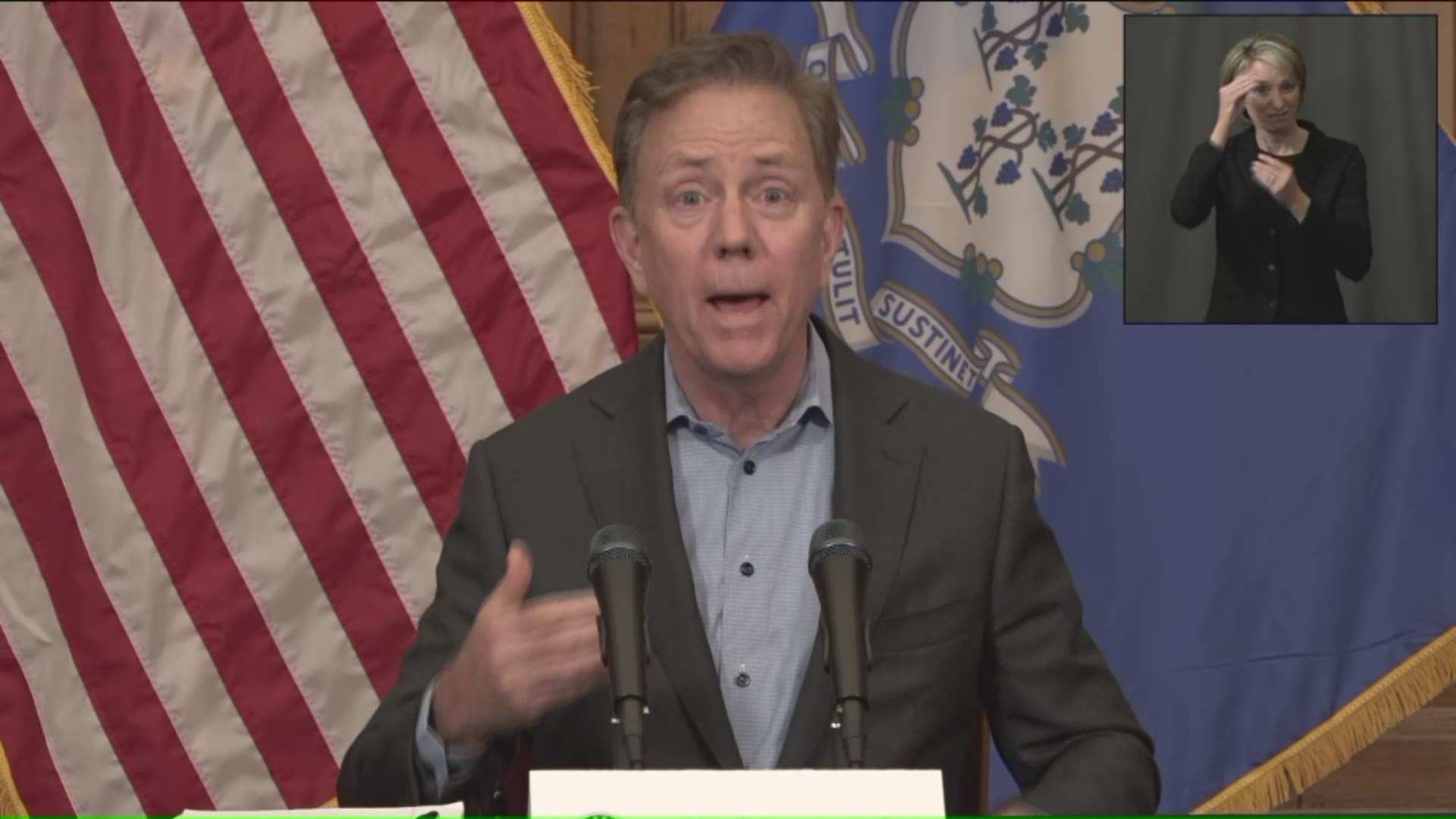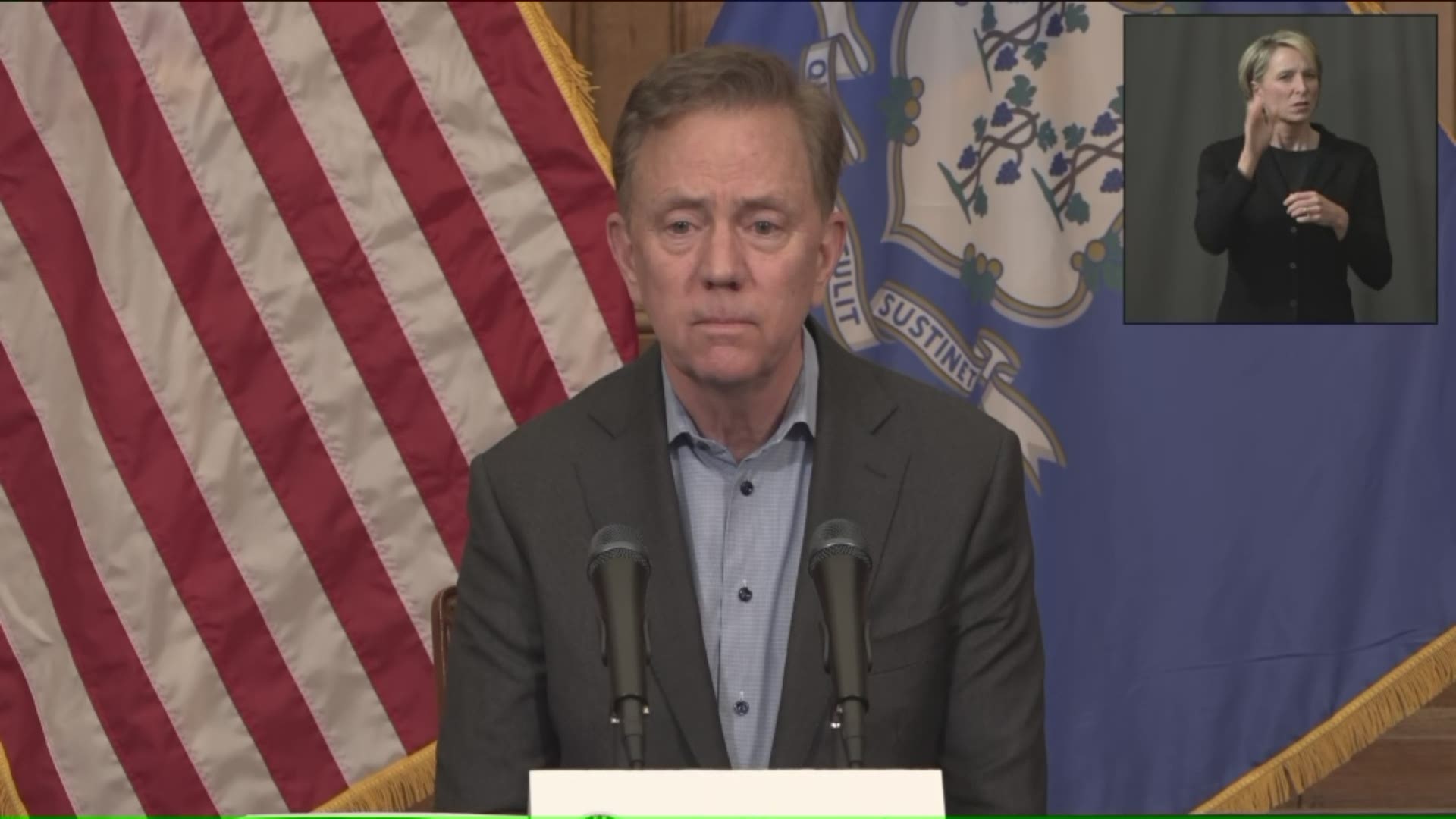Despite a fire alarm ending a daily press conference and causing an evacuation at the State Capital, Gov. Lamont and state leaders were able to provide an update on COVID-19.
According to the latest numbers released by the state:
- 26,767 people have tested positive for COVID-19 in the state, an increase of 455.
- The number of deaths rose by 79, bringing the total to 2,168.
- Hospitalizations decreased again by 41, for a total of 1,691.
- Total tests for COVID-19 increased by 2,073 to 94,818.
Gov. Lamont addressed concerns of CT residents with plans for the summer amid COVID-19.
The governor also talked about small businesses and looking at how CT employees can safely return to work with the rules in place.
First Selectman, Rudy Marconi of Ridgefield discussed his battle and recovery from COVID-19.
He said he came back from a town meeting on April 4th and was not feeling well.
According to Marconia, he went to bed and stayed there for days before testing positive for the coronavirus on April 6th.
"By Wednesday, the 8th, I was pretty far down the road into this virus, and working with several doctors here in our community my PCP, primary care physician, recommended at that point that I get on oxygen rather than go to the hospital," Marconi said. "I was on oxygen for eight straight days - 24/7."
Marconi said he took a number of medications to battle the disease including hydrochloroquine, Tylenol and vitamins, but he said the most helpful was anti-nausea medication.
"I can't tell you how severe I felt from laying on the floor and having difficulty in the evenings ,to finally being here today to tell that story. More importantly for everyone to understand… we cannot open too soon. Please believe me. This is a highly contagious, serious virus that we need to be careful each step we take," Marconi said.
He added that his wife also caught COVID-19, but had a mild two-day fever that was treated with Tylenol.
The pair are expecting to return to the hospital to be re-tested for the virus on Friday.
State representative Jane Garibay, who represents both Windsor and Windsor Locks, said her experience with COVID-19 felt like two and a half weeks of "having the flu". She said she was diagnosed on March 18th - one day after her sister. She says the pair "went through it together."
"It was very difficult," Garibay said. "I started with a sore throat. I had aches. My temperature at one point peaked at 103.5 and I did a six-hour visit to St. Francis. The one thing I find a lot of people have, which I had also, I couldn’t eat for like 13 days. Nothing tasted good. It was like cardboard."
Garibay says she "came out fine," and was able to keep the virus away from her husband and her niece.
Governor Lamont said he understands many are getting "cabin fever" and staying home is getting tiresome, but said, "when you hear a positive case of COVID, I want you to think about the human side of this and how it hits people and it hits people hard."
During Wednesday's briefing, Lt. Governor Susan Bysiewicz, spoke about the state's response to the U.S. 2020 Census.
Bysiewicz said Connecticut had a 57.% self-response rate, and was leading all of the Northeastern states. She added the state has been recognized for its efforts by the U.S. Census Bureau.
She attributed that success to the state's 156 "registered complete count committees" and said that effective framework will be used for an initiative announced Wednesday.
"In order to have a successful economic recovery after this catastrophe that is COVID-19, it's been a catastrophe for our public health and it's been an economic calamity. We are going to need to rebuild at the local level," said Lt. Governor Bysiewicz. "Today, I launched…the long term recovery committees."
Lt. Governor Bysiewicz said with the help of municipal organizations, they're going to ask each community in the state to choose a coordinator.
"We're going to ask our municipal leaders to identify someone to be that coordinator of the recovery effort in their town or city. That person, with the help of their municipal leaders, will come up with a group of community partners. Those community partners will include businesses. It will include philanthropic groups. It will include community groups. These committees will be diverse," said Lt. Governor Bysiewicz. "Those groups will work with our state long-term recovery partners, their legislators, and our federal partners to maximize funding, to make sure community needs are met, and to recognize what the local conditions are."
Lt. Governor Bysiewicz said she believes this will be an effective way to bring the economy back in a strong way and said a similar approach was used successfully in the aftermath of Hurricanes Sandy and Maria.







